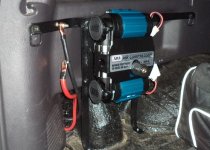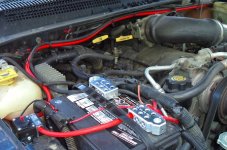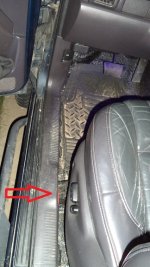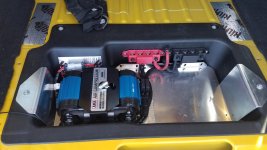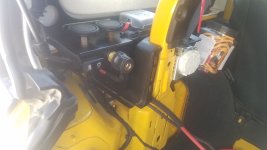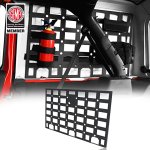slowfox
New member
Hello gents!
I am planning on running electrical from the main battery to the trunk. I need this for two purposes, one run will feed my ARB Twin Compressor which is to be relocated in the storage caddy in the trunk, and second run would be used as input for a Redarc Redvision system (BMS/Smart Fuse Distribution) which will be taking care of charging a secondary 100Ah battery and will output to all my camp gear.
My idea is to run a 5ft AWG1 SGX wire from the main battery to the passenger side under the hood where I will place two 3 way split distribution blocks for both +/-, fused for the positive only. From there I will run two runs of +/- AWG4 wire to the trunk, one of which will feed the air compressor and the other the Redarc system. The third split off the AWG1 wire under the hood I will use to feed inside the cab for a radio install and to power an ARB Linx.
I want to plan for the install and I tend to prefer the cables being run through the firewall and along the cab under the plastic trims. Diameter of those AWG4 cables is 0.331" and since I never ran a cable along that route I would appreciate any input, suggestions and information that you might have!
Please share your experience!


I am planning on running electrical from the main battery to the trunk. I need this for two purposes, one run will feed my ARB Twin Compressor which is to be relocated in the storage caddy in the trunk, and second run would be used as input for a Redarc Redvision system (BMS/Smart Fuse Distribution) which will be taking care of charging a secondary 100Ah battery and will output to all my camp gear.
My idea is to run a 5ft AWG1 SGX wire from the main battery to the passenger side under the hood where I will place two 3 way split distribution blocks for both +/-, fused for the positive only. From there I will run two runs of +/- AWG4 wire to the trunk, one of which will feed the air compressor and the other the Redarc system. The third split off the AWG1 wire under the hood I will use to feed inside the cab for a radio install and to power an ARB Linx.
I want to plan for the install and I tend to prefer the cables being run through the firewall and along the cab under the plastic trims. Diameter of those AWG4 cables is 0.331" and since I never ran a cable along that route I would appreciate any input, suggestions and information that you might have!
Please share your experience!

